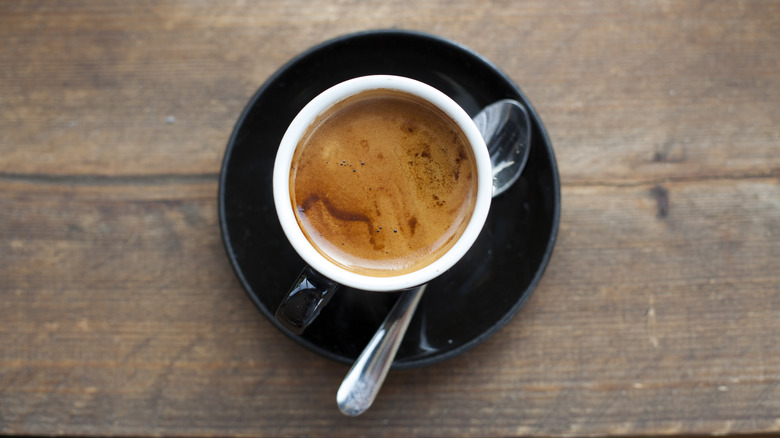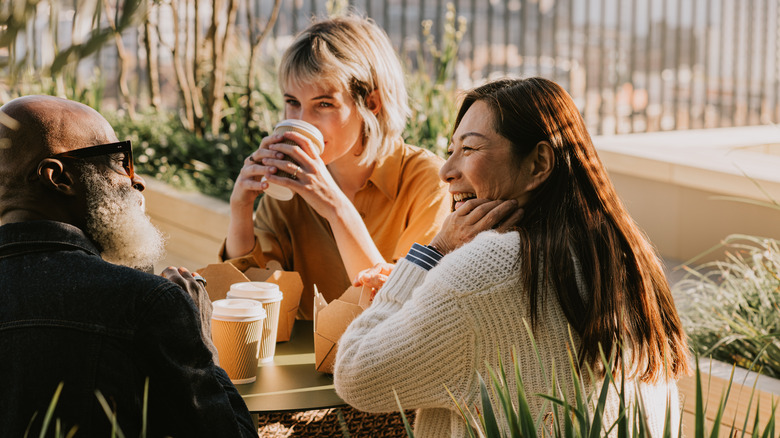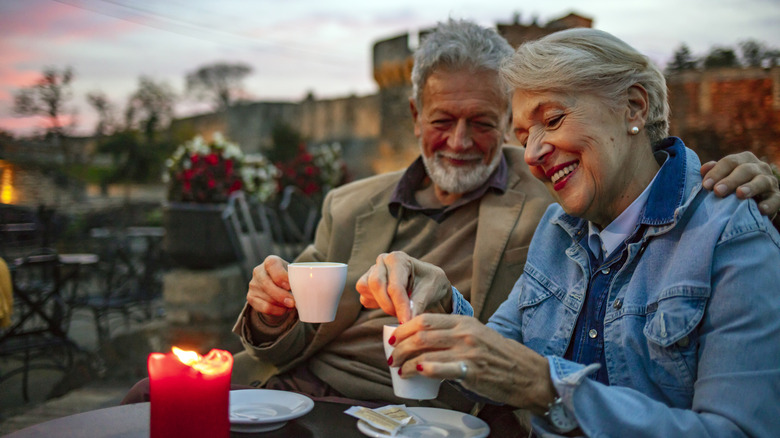How Norway Has Perfected The Art Of The Coffee Break
It's no secret that coffee at a cafe always tastes better than homemade, but there's one country in particular that's perfecting their coffee game, no matter where they are. To say that Norway loves their coffee is a massive understatement, as when it comes to European averages, they're at the top — along with fellow Scandinavian countries Sweden and Denmark. Most of their coffee imports are high-quality beans selected from the almost overwhelmingly wide world of coffee beans, and that makes sense: Most people prefer to drink it black. Lattes, cappuccinos, macchiatos ... not so much.
Until the late 1990s, coffee was almost strictly enjoyed in private, but coffee-drinking has been a social experience in Norway since the 1800s. In 2004, Norway's Tim Wendelboe was named World Barista Champion, and later explained to CNN that coffee has "been a huge part of our culture for many years," adding that while alcohol is very expensive, "coffee is still very cheap. That's why it has stayed as the social drink."
It's that social element that's extremely important, and that brings us to the kaffepause. The kaffepause is more than just a coffee break — it's enjoying coffee with an emphasis on "break." The American way might be to grab some terrible coffee from the break room, then head back to drink it at the desk over more work. But the Norwegian way is a social experience where friends, coworkers, or colleagues gather together to hit pause on the work day for just a bit.
What, exactly, is kaffepause?
For starters, kaffepause is a legal right: Over the course of a work day, it's mandatory that employers give their employees two 15-minute breaks. The idea is that everyone steps away from work, their desks, their phones, and other distractions, grabs a cup of coffee, and chats face-to-face with others. It's meant to give people time to clear their heads, meet colleagues that they might otherwise only communicate with via email, and participate in a little team-building relaxation. Sounds pretty amazing, right?
The practice of kaffepause isn't even really about the coffee — even though Norwegians do love their coffee. It's about the social connections and the chance to build relationships with coworkers that aren't just based on the relentless daily grind. (No pun intended.) Coffee is just the thing that everyone shares.
There's another element to this, too, and it's called koselig. Koselig is similar to the Danish idea of hygge, which is defined as having qualities of contentment, bringing about a feeling of well-being, friendliness, and comfort. Kaffepause should be taken in an environment that encourages koselig: Think of comfortable chairs, soft lighting, getting outside for a little bit, and the key component, encouraging warmth from within. While coffee is the obvious way of doing that in a literal sense, kaffepause also brings inner warmth figuratively by encouraging friendly conversations and shared experiences.
Kaffepause and koselig get Norwegians through long winter nights
As we mentioned, kaffepause and koselig go hand-in-hand to create a truly unique coffee-drinking environment. And it makes sense: In areas like Svalbard, the sun doesn't set between April 20 and August 22, but long summer days also mean long winter nights. Polar night lasts from November 27 to January 15, and that's a long time not to see the sun. Still, seasonal depression in Norway is incredibly low, which experts attribute in part to social rituals like kaffepause.
And it's fascinating stuff. Kaffepause's main elements — coffee and koselig — have both been tied to feelings of well-being in scientific studies. In 2008, Yale researchers conducted a study where they asked assistants to hold cups of hot or iced coffee while speaking with subjects. Those who held the hot coffee were overwhelmingly thought to be warmer people, and psychology professor John A. Bargh explained: "It appears that the effect of physical temperature is not just on how we see others, it affects our own behavior as well. Physical warmth can make us see others as warmer people, but it [can] also cause us to be warmer — more generous and trusting — as well."
That's supposed by brain imaging studies, which is pretty wild stuff. The relaxing environment of koselig and kaffepause has also been linked to lowering blood pressure and stress levels, boosting creativity, and — of course — helping you to relax. Kaffepause, it seems, is the Norwegian ritual that everyone should try.


